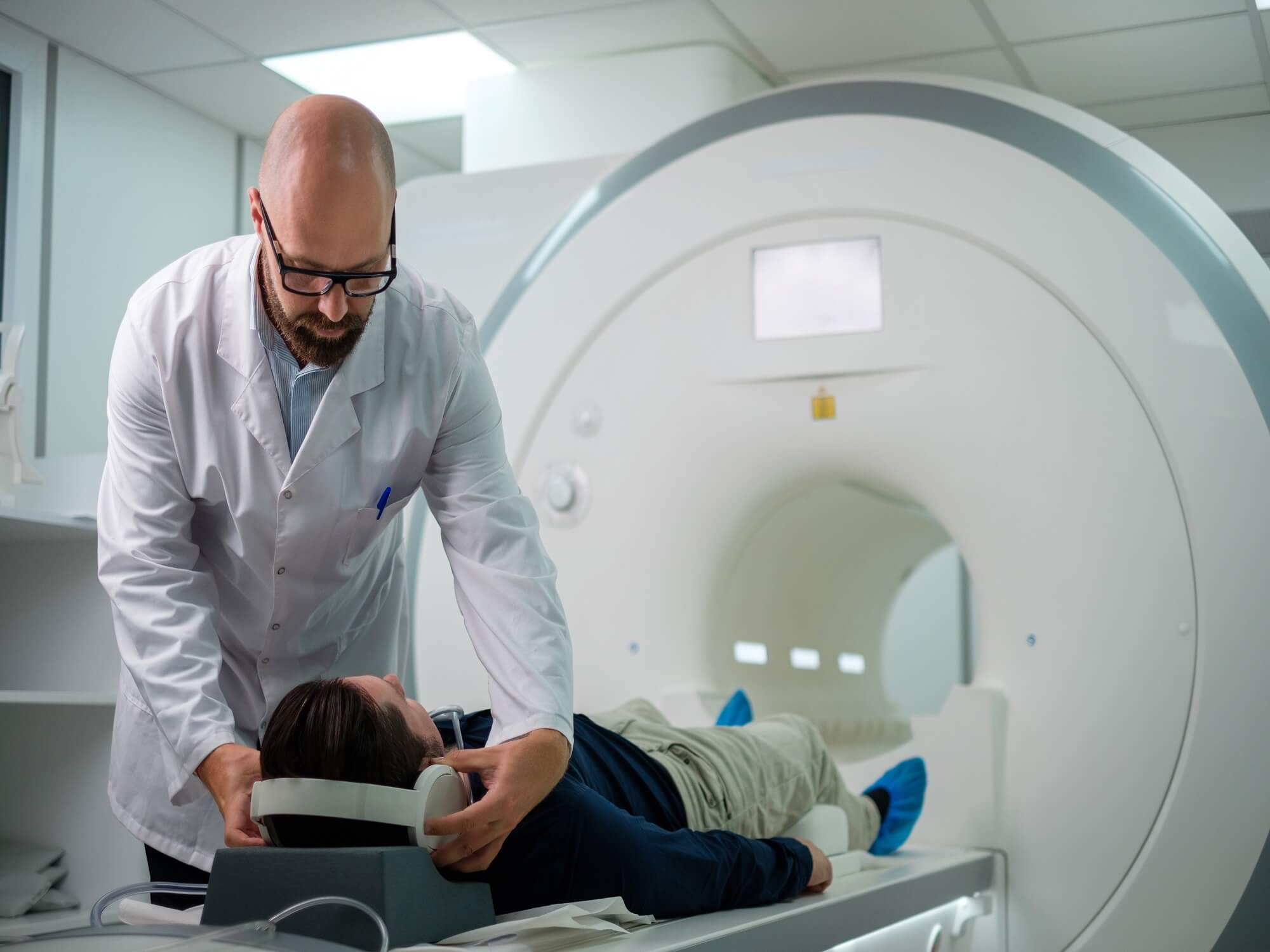×
MRI_Angiography

-
MRI is noninvasive and does not use ionizing radiation that helps physicians diagnose and treat medical conditions.
Magnetic resonance imaging (MRI) uses a powerful magnetic field, radio waves and a computer to produce detailed pictures of the body's internal structures that are clearer, more detailed and more likely in some instances to identify and accurately characterize disease than other imaging methods.
It is used to evaluate the body for a variety of conditions, including tumors and diseases of the liver, heart, and bowel. It may also be used to monitor an unborn child in the womb.
-
Why should I do it ?
-
Doctors use MRA to examine blood vessels in key areas, including the:
- Brain
- Neck
- Heart
- Chest
- Abdomen (such as the kidneys and liver)
- Pelvis
- Legs and feet
- Arms and hands
-
Doctors use MRA to:
- Identify abnormalities, such as aneurysms, in the aorta, both in the chest and abdomen, or in other arteries.
- Detect atherosclerotic (plaque) disease in the carotid artery of the neck, which may limit blood flow to the brain and cause a stroke.
- Identify a small aneurysm or arteriovenous malformation (AVM)—an abnormal connection between blood vessels—inside the brain or elsewhere.
- Detect plaque disease that has narrowed the arteries to the legs and help prepare for endovascular intervention or surgery.
- Detect disease in the arteries to the kidneys or visualize blood flow to help prepare for a kidney transplant or stent placement.
- Guide interventional radiologists and surgeons making repairs to diseased blood vessels, such as implanting stents or evaluating a stent after implantation.
- Detect injury to one or more arteries in the neck, chest, abdomen, pelvis or limbs after trauma.
- Evaluate arteries feeding a tumor prior to surgery or other procedures such as chemoembolization or selective internal radiation therapy.
- Identify dissection or splitting in the aorta in the chest or abdomen or its major branches.
- Show the extent and severity of coronary artery disease and its effects and plan for an intervention, such as a coronary bypass and stenting.
- Examine pulmonary arteries in the lungs to detect pulmonary embolism (blood clots, such as those traveling from leg veins) or pulmonary AVMs.
- Look at congenital abnormalities in blood vessels, especially arteries in children (e.g., malformations in the heart or other blood vessels due to congenital heart disease).
- Evaluate stenosis and obstructions of vessels.
- Screen individuals for arterial disease, especially patients with a family history of it.
-
Any preparations needed?
- You may need to wear a gown, or you may be allowed to wear your own clothing if it is loose-fitting and has no metal fasteners.
- Guidelines about eating and drinking before an MRI vary between specific exams and facilities. Unless you are told otherwise, take food and medications as usual.
- Tell the technologist or radiologist if you have any serious health problems or recently had surgery.
- If you have claustrophobia (fear of enclosed spaces) or anxiety, you may want to ask your doctor to prescribe a mild sedative prior to your exam.
-
Leave all jewelry and other accessories at home or remove them prior to the MRI scan. Metal and electronic items can interfere with the magnetic field of the MRI unit, and they are not allowed in the exam room. They may cause burns or become harmful projectiles within the MRI scanner room. These items include:
- jewelry, watches, credit cards and hearing aids, all of which can be damaged
- pins, hairpins, metal zippers and similar metallic items, which can distort MRI images.
- removable dental work
- pens, pocket knives and eyeglasses
- body piercings
- Mobile phones, electronic watches and tracking devices.
- Do not prepare food for others that requires prolonged handling with bare hands.
-
In most cases, an MRI exam is safe for patients with metal implants, except for a few types. People with the following implants may not be scanned and should not enter the MRI scanning area without first being evaluated for safety:
- some cochlear (ear) implants
- some types of clips used for brain aneurysms
- some types of metal coils placed within blood vessels
- some older cardiac defibrillators and pacemakers
- Tell the technologist if you have medical or electronic devices in your body. These devices may interfere with the exam or pose a risk. Many implanted devices will have a pamphlet explaining the MRI risks for that particular device. If you have the pamphlet, bring it to the attention of the scheduler before the exam. MRI cannot be performed without confirmation and documentation of the type of implant and MRI compatibility. You should also bring any pamphlet to your exam in case the
- Tell the technologist or radiologist about any shrapnel, bullets, or other metal that may be in your body. Foreign bodies near and especially lodged in the eyes are very important because they may move or heat up during the scan and cause blindness. Dyes used in tattoos may contain iron and could heat up during an MRI scan. This is rare. Tooth fillings, braces, eyeshadows and other cosmetics usually are not affected by the magnetic field. However, they may distort images of the facial area or brain. Tell the radiologist about them.
-
Doctors use MRA to examine blood vessels in key areas, including the: